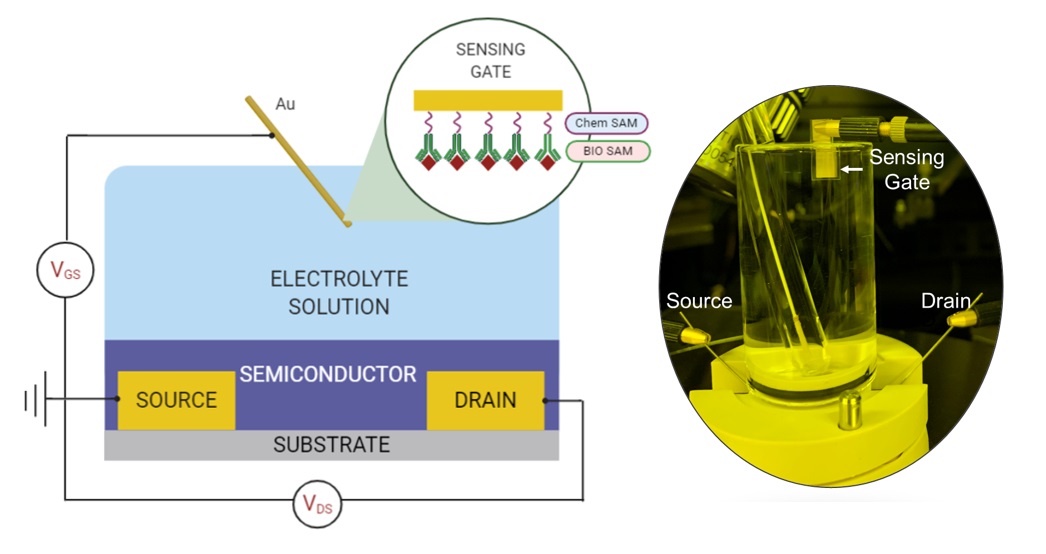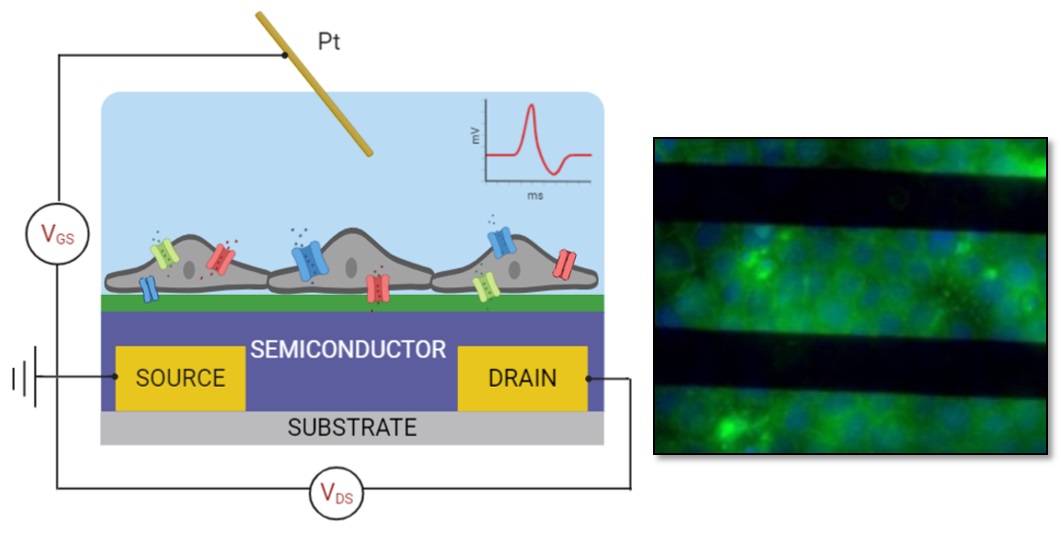Bioelectronics is an emerging field where efforts have been made towards the realisation of low-cost electronic devices that are able to transduce biological signals into a readable signal through an electronic transducer for diagnostics and therapy. Electrolyte-Gated Field-Effect Transistors (EGFETs) have become an attractive biosensing platform for label-free detection of a wide variety of analytes with high selectivity and sensitivity. In EGFETs, an electrolyte solution such as water or a biological fluid replaces the conventional solid-state dielectric and the semiconducting channel is capacitively coupled to the gate electrode through the electrolyte. Due to the high capacitances of the electrical double layers formed at the interfaces of gate/electrolyte and electrolyte/semiconductor, these devices operate at low voltages (<1V) and are highly sensitive to very small potential changes (down to 100µV) making them the best candidate to sense biological signals.
In this context, our group’s activity is related to the design and development of biosensors based on EGFETs via a cost-effective printing technique where the active channel is made up of solution-processable semiconducting materials ranging from organic materials such as P3HT to Carbon nanotubes. Such approach is scalable (from single devices to large area transistor arrays) at very low cost thus maintaining a high level of miniaturization together with a good sensitivity, reproducibility and stability.
In addition to the fabrication and design of the printed biosensors, our group’s activity is also focused on exploring their use in biomedical application for (i) sensing a specific analyte (protein) through biofunctionalization of the gate electrode and (ii) for the study of the electrical properties of cell to study their growth (adhesion, proliferation and detachment) and in the case of electrogenic cells, to record the bioelectronics signal such as the action potential.

